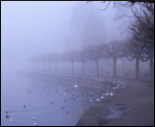 If you have ever suffered a major loss you know what it means to be depressed. You feel hopeless -- and the world appears too much just what it is, drained of meaning. You don't want to see people or do much. What's the point? The Diagnostic and Statistical Manual of Mental Disorders, published by the American Psychiatric Association, provides diagnostic criteria for depression that highlights anhedonia a "markedly diminished interest or pleasure in all, or almost all, activities." Depression is marked by withdrawal from people, places and things.
If you have ever suffered a major loss you know what it means to be depressed. You feel hopeless -- and the world appears too much just what it is, drained of meaning. You don't want to see people or do much. What's the point? The Diagnostic and Statistical Manual of Mental Disorders, published by the American Psychiatric Association, provides diagnostic criteria for depression that highlights anhedonia a "markedly diminished interest or pleasure in all, or almost all, activities." Depression is marked by withdrawal from people, places and things.
There have been many useful attempts to get to the root causes of depression. Freud believed that depression was anger turned inward. Cognitive therapists view depression as the outgrowth of a dysfunctional belief system. Neuroscientists have noted dissociation of the limbic system of the brain, which seems to effect the neurotransmitters serotonin, norepinephrine and dopamine. Some evolutionary psychologists have argued that depression is an adaptive process that forces us into a state of ruminative inaction, allowing us time to recalibrate mistakes and shift gears.
All of these models, while in part true, fail to tell the whole story. They have in common that they locate depression within a single brain. The brilliant therapist and researcher John Bowlby postulated instead that depression emerges from disturbances in the development of bonds between people, particularly between child and parents. Problems with early needs tend to damage a later capacity to deal with loss. Although there are certainly genetic and tempermental factors that might pre-dispose a person to falling into an alienated, depressed state of mind, depression itself corresponds to a loosening of attachment between the sufferer and important others. Therapy can be conceptualized as the development of a new attachment relationship whose goal is to explore problems with past and present attachment relationships. Experience and insight combine to promote connectivity in the room, in the world and in the brain.